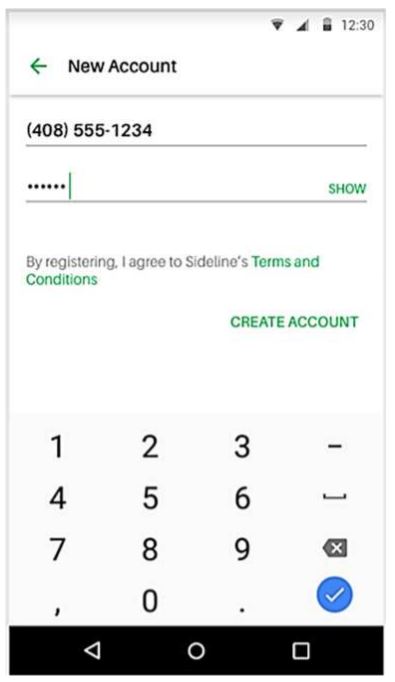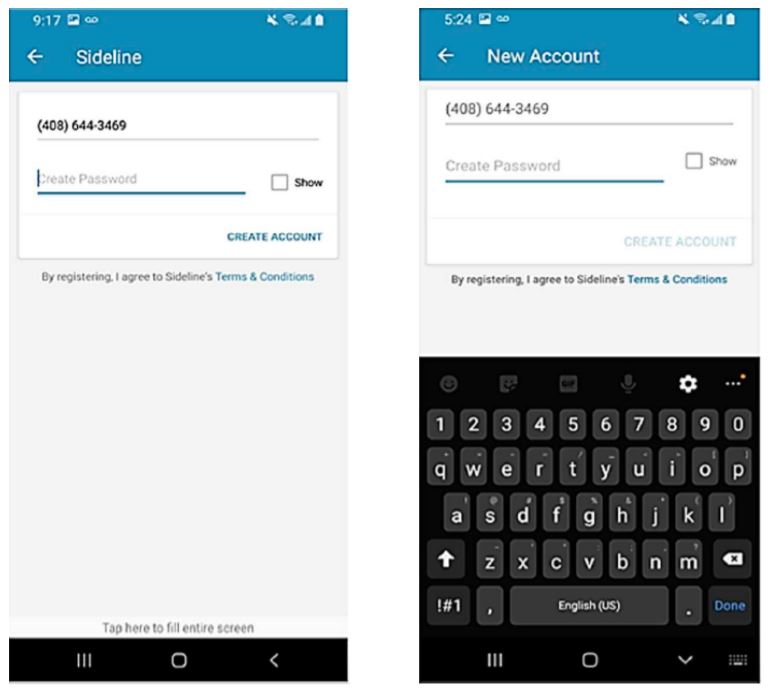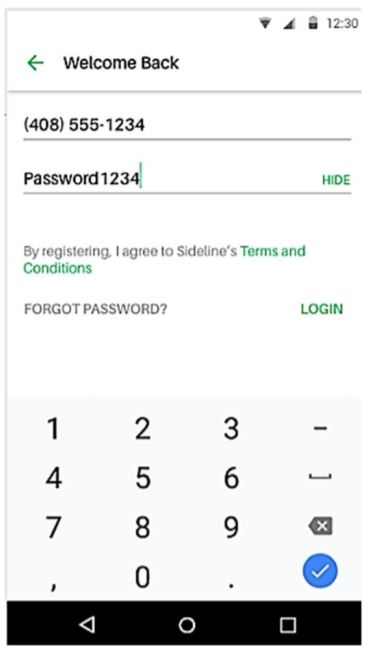TOS Isn’t a Browsewrap or a Clickwrap, But the Judge Upholds It Anyways–Regan v. Pinger
This case doesn’t break much new ground doctrinally, but it’s a characteristically clear opinion from Judge Koh that offers some helpful lessons/reminders. The app in question is called “Sideline,” “a paid service that allows users to create a ‘virtual,’ alternative telephone line for their mobile phone.” For reasons the court doesn’t explain, the plaintiff used the app heavily, creating 186 different accounts over several years. The plaintiff broke off the relationship because the defendant allegedly kept sending text messages to the plaintiff after the plaintiff texted “stop.” The plaintiff sued for TCPA claims. The defendant sought to send the case to arbitration per its TOS.
Over the years, the defendant used different TOS formation layouts:
I think my Internet Law students could instantly suggest a half-dozen improvements to each of these screens. And IMO, the UIs got worse over time, not better, even as the law was making it harder to form TOSes. Not sure how that happened. Nevertheless, these all look fairly consistent with prevailing TOS formation law.
(I will note that I’m regularly seeing courts include screenshots of the TOS formation processes in their opinions and Westlaw indexing the images rather than omitting them. Progress!)
As a bonus, the defendant displayed the following screen to returning users, including a cross-reference to the TOS:
Judge Koh’s analysis proceeds like so many other TOS formation cases. The opinion first recites the browsewrap/clickwrap distinction. Then, the court says the distinction doesn’t help because “the Sideline App’s TOS are somewhere between a pure clickwrap agreement and a pure browsewrap agreement” (as usual, a little piece of me died reading that line), so this is a “sign-in wrap” (more of me died). Then, having taxonomized the TOS formation, the court says the taxonomization doesn’t actually matter to the legal conclusion:
Regardless of the precise label, based on the design and function of the Sideline App, the Court finds that Plaintiff assented to the Sideline TOS by creating an account….the Sideline App sufficiently informed Plaintiff either (1) that by creating an account the user agreed to Sideline’s TOS, or (2) that by clicking the “Create Account,” “For Professional Use,” “For Personal Use,” or “Login” button, Plaintiff was agreeing to the Sideline TOS. Plaintiff was also repeatedly reminded that he agreed to the TOS by creating an account when Plaintiff clicked the “Login” button upon returning to use the Sideline App. As such, when Plaintiff created each account, Plaintiff assented to the Sideline TOS by creating that account.
The plaintiff argued that this case was like Cullinane v. Uber and Nicosia v. Amazon. The court says that (1) those weren’t 9th Circuit decisions, and (2) the TOS notice in this case was “clearly conspicuous.” I wonder if we’re seeing a bona fide circuit split or if the -wrap terminology is so loose that the cases are factually distinguishable and thus reaching consistent results.
The plaintiff argued that the call-to-action (“by registering”) didn’t mirror the actual button text, which said “create account.” This is an unforced error by the defense that I hope you aren’t making. The court says it’s of no consequence, however. The court cites Meyer v. Uber, which rejected a virtually identical argument.
Finally, the court upholds the application of the arbitration clause to the TCPA claim because the TOS said that arbitration applied to “any dispute,” though the court says it’s a close call.
Some lessons this case reinforces:
- TOS formation should always require 2 clicks to qualify as a “clickwrap.”
- If you’re evolving your TOS formation UI over time, make sure it actually gets better, not worse.
- Confirming the user’s acknowledgment of the TOS when users log back in should generally help, though it won’t always cure other defects.
- There should always be a fit between the call-to-action and the action the user actually takes.
Case citation: Regan v. Pinger Inc., 2021 WL 706465 (N.D. Cal. Feb. 23, 2021)




